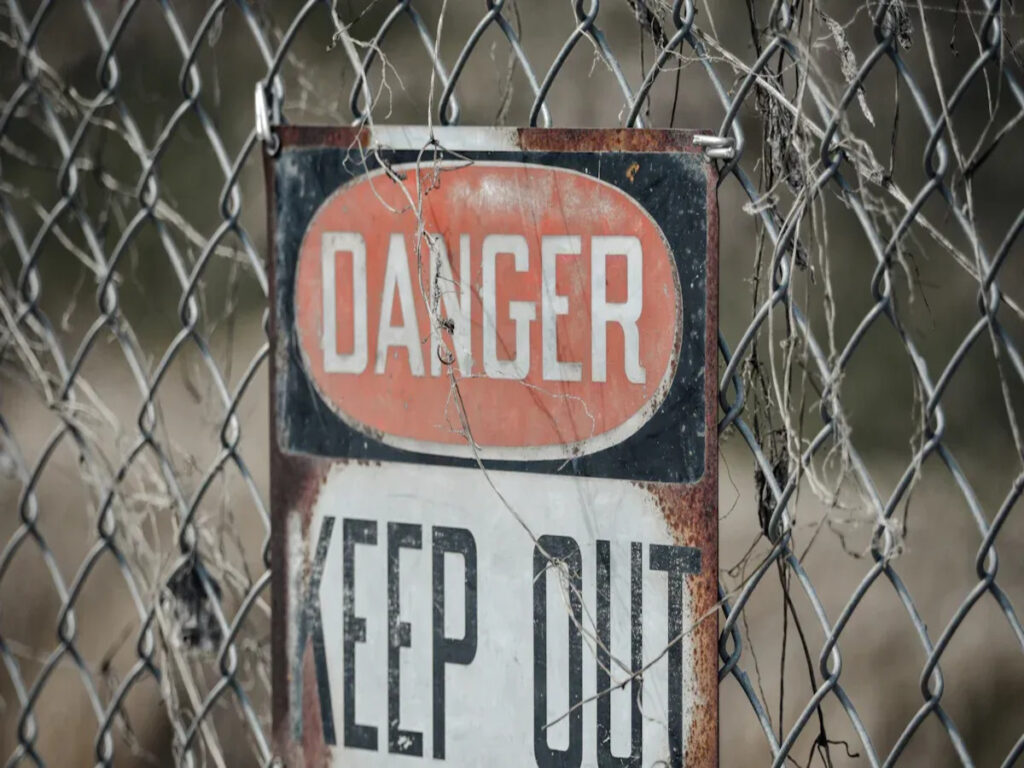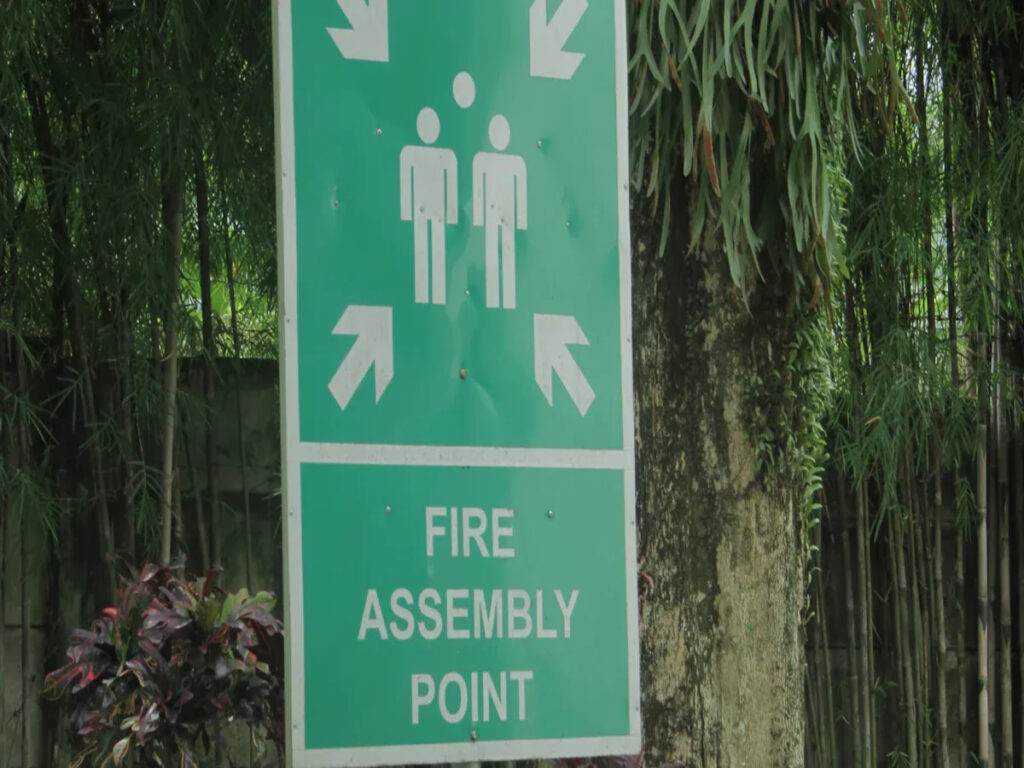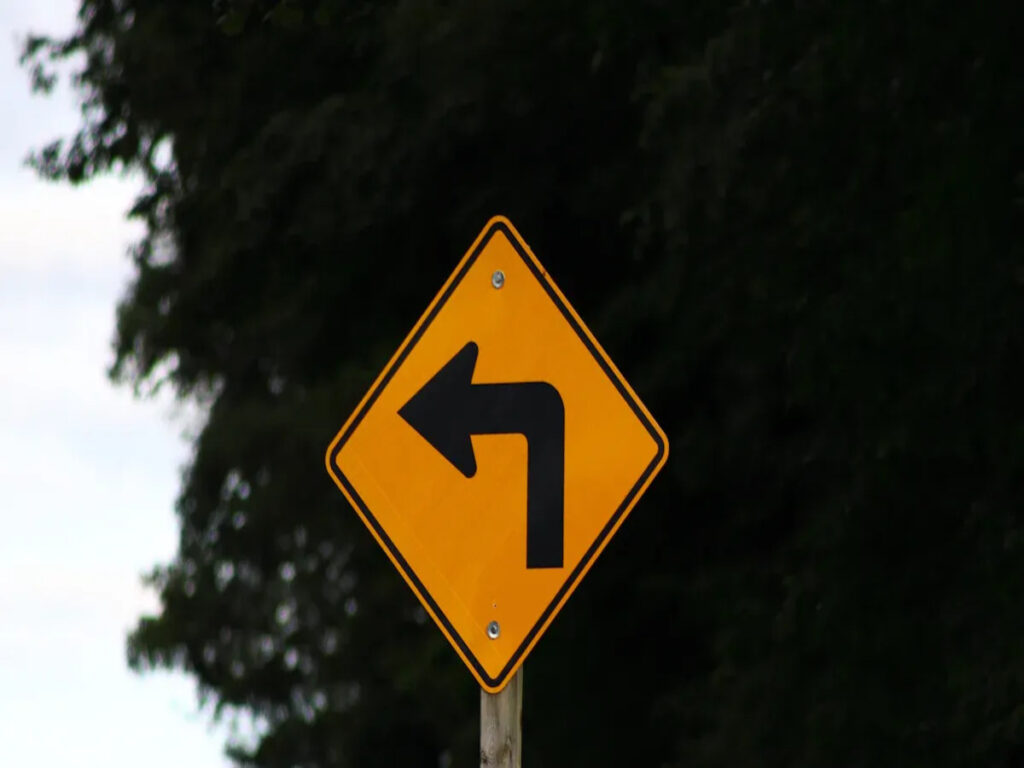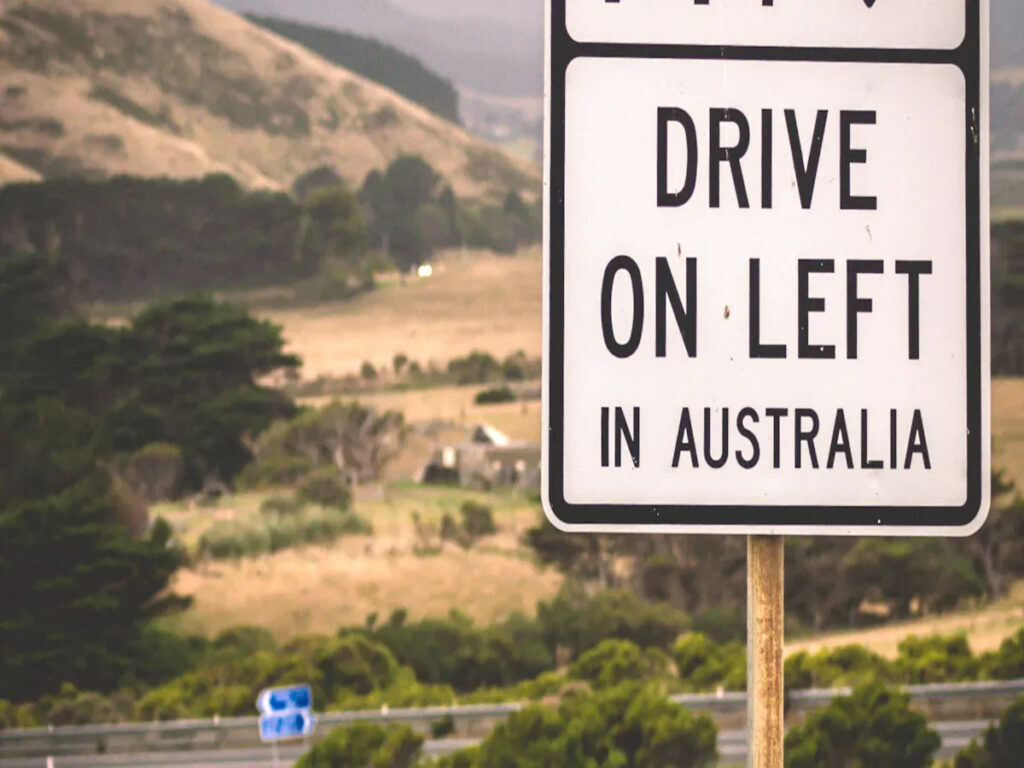
Multi-message traffic signs play a crucial role in ensuring road safety. They convey various types of information, such as speed limits or potential hazards, all on a single sign. By reducing the number of individual signs, they enhance driver comprehension and minimise confusion.
Regulations surrounding these signs influence their design and placement. Recent changes aim to improve their visibility, durata, and readability. Ad esempio, LED-based multi-message traffic signs have been shown to reduce accidents compared to traditional signage. Inoltre, cities have experienced smoother traffic flow following the implementation of these systems. Examining Australian regulations alongside international standards highlights opportunities for improvement. This not only ensures compliance but also contributes to safer roads globally.
OPTRAFFICO Fornisce alta qualità traffic signs for sale designed to meet both Australian and international standards, ensuring maximum safety and efficiency on the roads. Explore our range of traffic signs today and enhance the safety of your road infrastructure.
Takeaway chiave
- Multi-message traffic signs make roads safer by giving clear updates. They help drivers avoid mistakes and accidents.
- New rules in Australia aim to make signs easier to see. They also focus on making signs last longer and be clearer.
- Rules in places like the EU and US focus on uniformity. They also make signs shiny so they are visible in all weather.
- Using smart technology in signs helps drivers get better information. This makes traffic move smoothly and saves travel time.
- Changing traffic sign rules often helps people trust them more. It makes drivers feel safe and confident on the roads.
Understanding Multi-Message Traffic Signs
Purpose and Functionality
Multi-message traffic signs are road signs that show many details. They often include speed limits, warnings, and road conditions on one sign. By combining messages, they reduce the need for many separate signs. This helps keep roads less cluttered and drivers more focused.
These traffic safety signs do more than just share information. They make roads safer by giving quick updates to drivers. Per esempio, mobile signs can warn about accidents or bad weather. This helps drivers avoid danger and lowers accident risks. Tests ensure these signs are clear and easy to see in all conditions.
| Key Function/Metric | Descrizione |
|---|---|
| Improves Road Safety | Mobile signs give fast updates, helping prevent accidents. |
| Better Communication with Drivers | These signs share important details about road conditions. |
| Reduces Traffic Problems | Cities report fewer jams after using these signs. |
| Tested for Reliability | Signs are checked to meet rules and work well. |
| Easy to See | Tests confirm messages are bright and clear anytime. |
| Saves Energy | Solar power keeps them running without needing fuel. |
Importance in Traffic Management and Safety
Multi-message traffic signs help manage traffic and keep roads safe. By showing many messages on one sign, they reduce distractions. Drivers can quickly understand key details like detours or roadworks.
These signs also help traffic move better. Cities using them report fewer traffic jams. Nuova tecnologia, like sensors and cameras, makes them even smarter. They can change messages based on real-time traffic updates. This keeps drivers safe and traffic flowing smoothly.
Traffic signs have improved a lot over time. From the three-colour system in 1920 to smart lights today, technology has changed traffic control. Multi-message signs are the latest step, mixing old designs with new tech to meet modern needs.
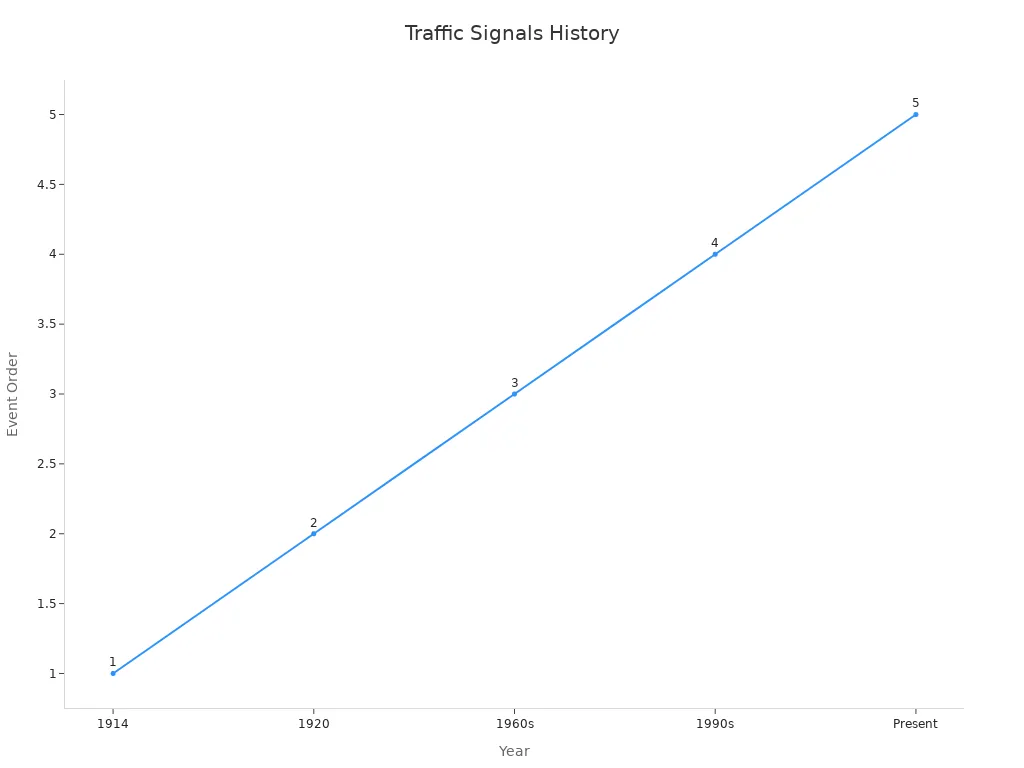
Regulatory Landscape for Multi-Message Traffic Signs in Australia
Overview of Australian Traffic Signage Standards
Australian traffic sign rules give clear steps for making road signs. IL COME 1742 guide is the main rulebook for traffic signs. It explains how to design and place signs properly. These rules make sure signs look the same everywhere in Australia. They also set the size, colori, and letters used on signs to help drivers recognise them easily.
Multi-message traffic signs follow these rules by showing many details on one sign. This keeps roads tidy and helps drivers understand messages quickly. Signs use metric units like kilometres per hour, matching Australia’s system. Special signs, Piace “Dare la precedenza,” use local words, making them different from signs in other countries.
Recent Updates and Specific Requirements
New rules for Australian traffic signs have stricter demands for multi-message signs. These changes aim to make signs easier to see, stronger, and clearer. Important updates include:
| Caratteristica | Descrizione |
|---|---|
| Matches local needs | Signs use symbols and words that suit Australia’s roads. |
| Same design everywhere | Signs have fixed shapes, colori, and letters to look alike. |
| Night-time visibility | Materials must follow AS/NZS 1906.1 rules to shine at night. |
| Metric units | Signs use kilometres per hour for speed limits. |
| Special signs | Includes signs like “Give Way” instead of “Yield.” |
Rules for reflectivity, under AS/NZS 1906.1, make sure signs are visible at night. Signs must also handle tough weather and stay strong over time. The updates focus on making signs easy to read, with clear letters and spacing so drivers can understand them fast.
Focus on Safety and Accuracy
Safety and accuracy are key in making Australian multi-message traffic signs. Clear messages help drivers avoid confusion and lower accident risks. Signs must show important details, like warnings or speed limits, in the right order.
Correct signs help stop accidents by giving drivers the right information. This is especially important in busy areas or bad weather. Reliable signs build trust with drivers, rendere le strade più sicure per tutti. By following strict safety rules, Australia ensures its multi-message signs work well and keep roads safe.
Caso di studio: Rule Changes in New South Wales
New South Wales (NSW) has made big changes to traffic sign rules. These updates aim to make roads safer and signs easier to understand. They also help meet modern standards and solve problems on NSW’s many types of roads.
Key Rule Updates in NSW
The NSW government has improved traffic sign rules in several ways. These changes focus on making signs clearer, stronger, and easier to see. Here are the main updates:
- Better Reflectivity Standards: Signs must now shine brighter at night and in bad weather. Materials must follow the AS/NZS 1906.1 rule for reflective surfaces.
- Clear Message Order: Rules now require important details, like speed limits, to come first. This helps drivers quickly find the most critical information.
- Stronger Signs: Signs must survive tough weather, like heat, piovere, and wind. This is especially important for areas near the coast or in the countryside.
- Same Design Everywhere: Fonts, colori, and symbols must look the same on all signs. This makes it easier for drivers to understand them.
Effects on Road Safety and Rules
These new rules have made NSW roads much safer. Clearer and brighter signs help drivers make better choices, Abbassamento dei rischi per incidenti. Per esempio, reflective signs are easier to see on dark roads, which is vital for highways without streetlights.
Following these rules has also made it simpler to approve new signs. Builders and makers must meet the updated standards, ensuring all signs are high quality. This consistency helps people trust road signs more.
Real-Life Examples in NSW
Some projects in NSW show how well these changes work. One example is the Pacific Highway sign upgrade. Old signs were replaced with new ones that meet the latest rules. Key improvements included:
| Caratteristica | Before Changes | After Changes |
|---|---|---|
| Riflettività | Hard to see at night | Easy to see anytime |
| Message Clarity | Crowded and confusing messages | Simple and clear information |
| Durabilità | Damaged by bad weather | Strong and weather-resistant |
These upgrades have cut down accidents, Soprattutto di notte o in caso di maltempo.
Lessons from NSW’s Changes
NSW shows how updating traffic sign rules can improve safety. By focusing on clear, forte, and safe signs, they set an example for others. Their work proves that better rules can make roads safer and traffic flow smoother.
Mancia: Regularly checking and improving traffic sign rules keeps them useful. NSW’s success shows how important it is to keep up with modern needs.
International Standards for Multi-Message Traffic Signs
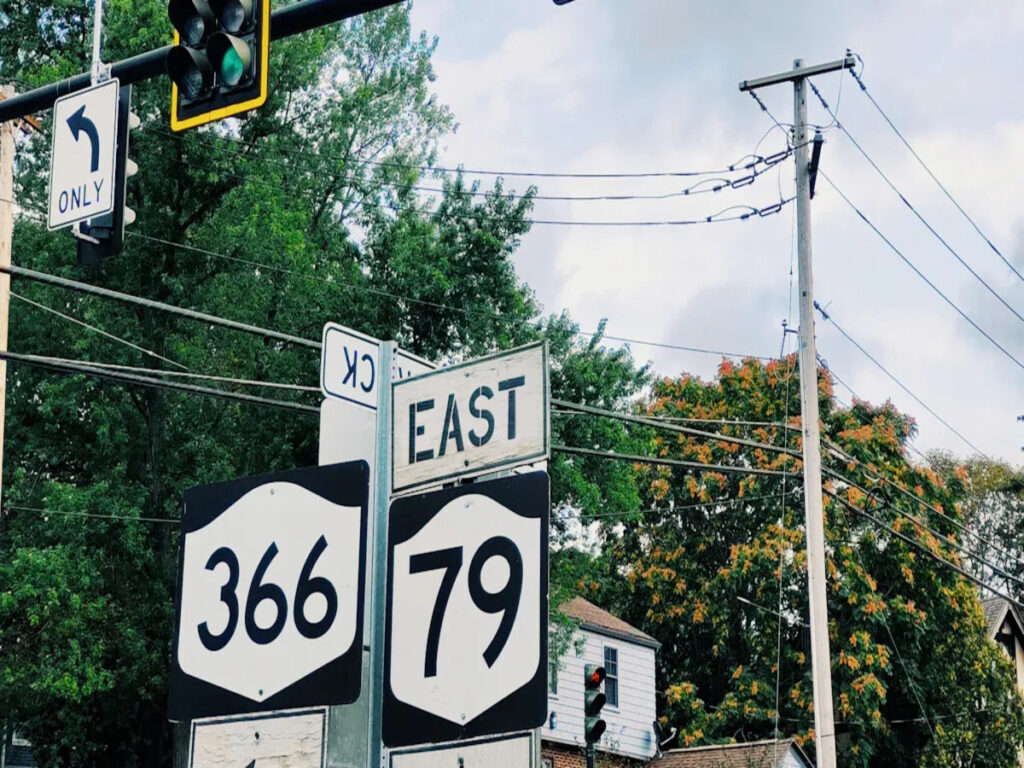
European Union Regulations
IL European Union (Unione Europea) has clear rules for traffic signs. These rules make sure signs look the same and are safe in all member countries. Multi-message signs in the EU follow the EN 12899-1 standard, which explains how to design and use fixed road signs.
EU rules focus on making signs easy to see and long-lasting. Signs must use reflective materials to stay visible at night or in bad weather. Strong materials are required so signs last longer and need less fixing. Messages on signs must also be clear, so drivers can quickly understand important details.
Multi-message signs are now part of Intelligent Transport Systems (SUO). ITS often uses digital signs, but traditional signs are also updated to work with these systems. Per esempio, fixed signs can show steady information while ITS gives live updates. This helps traffic move better and keeps roads safer.
EU Traffic Sign Standards
IL IN 12899-1 standard gives detailed rules for making multi-message signs. These rules help all EU countries have similar signs, making roads safer and easier to use. Important parts of the standard include:
- Riflettività: Signs must shine back light to stay visible in the dark. This is very important for highways or rural roads without streetlights.
- Durabilità: Signs must handle bad weather like heavy rain, nevicare, or heat. This keeps them working well for a long time.
- Message Display Format: Messages must be arranged clearly, with the most important details easy to see first.
- Standardised Colours and Fonts: Signs must use the same colours and letters across all countries. Per esempio, warning signs often have yellow or red backgrounds with black writing.
These rules make driving safer and easier, especially when travelling between countries. Drivers can trust that signs will look the same, even on unfamiliar roads.
United States Regulations
IL United States uses the Manuale sui dispositivi di controllo del traffico uniforme (MUTCD) to guide traffic signs. This manual explains how to design and place signs so they are safe and easy to understand. Multi-message signs in the U.S. are made to give drivers key details quickly without causing distractions.
The MUTCD focuses on safety and visibility. Per esempio, signs must help pedestrians in work zones and give clear directions to cyclists. New devices, like bicycle traffic signals, show the growing care for non-drivers. The MUTCD also includes signs for electric vehicle charging, supporting eco-friendly travel.
Each state can add its own rules to fit local needs. While the MUTCD gives a national guide, states can adjust signs for things like busy cities or quiet rural roads. This flexibility helps signs work better in different places.
| Regulatory Impact | Descrizione |
|---|---|
| Safety Improvements | Better crosswalks and pushbuttons for pedestrians. |
| Accessibility | New rules for helping pedestrians in work zones. |
| Bicyclist Safety | New signals and boxes for safer cycling. |
| Electric Vehicle Direction | Signs to guide drivers to charging stations. |
| Automated Vehicle Preparation | Rules to prepare roads for self-driving cars. |
| Innovation Promotion | Encouraging new ideas for traffic devices. |
| Compliance Costs | Estimates of costs for following new MUTCD rules. |
The U.S. balances new ideas with practical needs for traffic signs. By planning for changes like electric cars and self-driving vehicles, the MUTCD keeps signs useful for the future.
FHWA MUTCD Guidelines
IL Manuale sui dispositivi di controllo del traffico uniforme (MUTCD) is the main guide for traffic signs in the United States. È pubblicato da Amministrazione federale delle autostrade (FHWA) and ensures signs are safe, chiaro, and consistent nationwide.
Multi-message signs must be easy to understand and useful. The rules say to avoid repeating the same information. Per esempio, using both pictures and words for the same message is not recommended. Invece, signs should give short, clear details that drivers can quickly read.
The MUTCD also explains how Changeable Message Signs (CMS) should work. These signs show live traffic updates and must follow these rules:
- Messages must be simple and use normal sentence structure.
- Real-time traffic updates should come first, with other details second.
- Travel time messages should include distance to help drivers plan.
Seguendo queste regole, the MUTCD helps make roads safer and traffic smoother. Clear and simple signs help drivers make better choices, Ridurre incidenti e ritardi.
State-Level Variations
The MUTCD gives national rules, but states can change them to fit local needs. This helps states deal with different road types, tempo atmosferico, and traffic.
In busy cities, signs may focus on managing heavy traffic. Per esempio, California uses lane-specific instructions to reduce jams. In rural areas like Montana, signs are made to handle tough weather and stay visible.
States may change sign designs in these ways:
- Font and Colour: Adjustments improve readability in different lighting.
- Message Order: Some states show warnings before directions if hazards are common.
- Materiali: Coastal states use rust-proof materials, while others focus on wind resistance.
These changes can make designing signs harder for manufacturers. They must ensure signs meet rules in different places. Still, the main goal is the same: to make roads safer and traffic easier to manage.
Nota: Aligning state rules with the MUTCD can make signs more consistent. This helps drivers feel confident on unfamiliar roads.
Comparing the Impact of Regulatory Changes

Design Rules
Changes in rules affect how traffic signs are made. In Australia, the AS 1742 guide sets rules for size, colori, and fonts. Warning signs must use colours like black on yellow for better visibility. In Europa, IN 12899-1 requires reflective materials for night-time use, especially on dark rural roads.
Negli Stati Uniti, MUTCD rules allow signs to fit local needs. Coastal areas use materials that resist rust, while snowy regions need stronger signs. These differences mean sign makers must meet various rules while keeping designs consistent.
Message Order and Clarity
The way messages are arranged on signs is very important. Rules ensure key details, like speed limits, are easy to spot. Australian standards use clear spacing and big letters so drivers can read signs quickly.
European rules put safety messages first, like warnings above directions, to grab attention. Negli Stati Uniti, MUTCD advises against too much information on one sign. Short and simple messages help drivers understand faster without confusion.
Safety and Following Rules
Safety is the main goal of traffic sign rules. Changeable signs must match permanent ones to avoid mixed messages. Accurate updates are vital during bad weather to prevent accidents. Studies show wrong-way crashes are 27 times deadlier than other accidents. Clear and timely signs can save lives.
Following rules also builds trust with drivers. People depend on clear signs to travel safely. By meeting standards, authorities show they care about road safety, making drivers feel more confident.
Public Trust and Perception
Public trust in traffic systems affects road safety and flow. Multi-message traffic signs help build this trust by sharing clear and timely details. Drivers depend on these signs to make smart choices, especially in new places or emergencies.
Studies show that good signs improve public opinion. Xu et al. (2010) found drivers trust traffic info more when signs are clear. Khoo and Ong (2013) showed that better views of Advanced Traffic Information Systems (ATIS), which use multi-message signs, lead to higher satisfaction with services.
| Studio | Risultati |
|---|---|
| Zhang and Li (2018) | VMS info affects drivers’ route choices. |
| Xu et al. (2010) | Clear VMS messages improve drivers’ trust in traffic info. |
| Khoo and Ong (2013) | Positive ATIS views link to better service satisfaction. |
| Zhong et al. (2012) | Route choices depend on age, experience, income, and road familiarity. |
Sign design and placement also affect trust. Drivers trust signs that look the same and give correct info. Australian rules ensure signs match everywhere, helping drivers trust them. Negli Stati Uniti, state-level changes can confuse drivers and lower confidence.
Social factors also shape opinions. Peeta and Ramos (2006) found age, income, and road knowledge affect reactions to traffic info. Younger or less experienced drivers may struggle with multi-message signs. This shows the need for simple and clear messages.
Nota: Keeping traffic sign rules updated builds public trust. Reliable and easy-to-read signs make roads safer and smoother for everyone.
Implications for Buying and Using Signs
Following Rules When Buying Signs
Buying traffic signs must follow updated rules to avoid delays. New rules often add requirements for materials, visibilità, and strength. Per esempio, Australian rules require reflective materials that meet AS/NZS 1906.1 standard. These materials help drivers see signs in the dark. In Europa, IN 12899-1 rules focus on making signs strong and similar across countries.
Public projects, like those using multi-message signs, show the challenges of following rules. A €160 million project for a teaching centre showed how important it is to follow laws and keep good records. This example proves that buying decisions affect how well projects succeed.
Changing Designs and Supply Chains
New rules mean sign designs and supply chains must change. Makers need to use better materials, like rust-proof ones for coastal areas or strong ones for snowy places. These changes help signs meet updated rules.
Supply chains must stay flexible to handle these updates. Working together with makers, suppliers, and rule-makers ensures signs meet new standards. This teamwork avoids problems with rules and speeds up project approvals.
Effects on Project Approvals and Building
Rule changes can slow down project approvals and building times. Policies, like those from the Federal Highway Administration (FHWA), ask for plans to fix bad impacts. These plans can make approvals take longer. Environmental reports also need checking to stay valid, which can delay projects.
If big problems are found, extra environmental studies may be needed. These studies can change project plans and take more time. While this process is slow, it makes sure projects are safe and follow rules. This builds public trust in new roads and signs.
| Aspetto | Descrizione |
|---|---|
| Fixing Problems | FHWA rules need plans to fix bad impacts, which can slow approvals and change project plans. |
| Checking Reports | Environmental reports must be checked again before big approvals, which can affect how fast projects move forward. |
| Extra Studies | If big problems are found, extra studies may be needed, delaying approvals and changing project plans. |
Dynamic Regulatory Monitoring
Keeping up with changing rules is key for multi-message traffic signs. By tracking updates, organisations can adjust their plans to meet new rules. This helps avoid problems and makes traffic systems work better.
One way to do this is by using teams from different areas. These teams, like finance and operations, work together to meet goals. Technology tools with real-time data make this easier. They help teams make quick choices and check if materials meet the latest rules.
| Strategia | Result |
|---|---|
| Smart Data Tools | Fewer stock shortages or extra supplies |
| Supplier Checks | Deliveries improved by 25% |
| Risk Planning | Problems cut down by 40% |
| Cost Control | Saved up to 15% on costs |
| Eco-Friendly Choices | Lowered carbon output by 20% |
Using smart tools has also sped up buying processes. Some companies now buy supplies 30% faster. One electronics company saved 15% on materials in just a year. These examples show how tech helps keep up with new rules.
Mancia: Update buying plans often to match new rules. This saves time and shows you care about following rules and improving systems.
Spotting risks early also helps avoid delays. Adjusting supply chains quickly keeps signs reliable and safe. This is especially important in places with many different rules.
Future Trends and Recommendations
Smart and Digital Multi-Message Signs
The future of traffic signs is in smart and digital designs. These signs change based on real-time data, like weather or traffic apps. This helps drivers get the right information quickly, making roads safer and less crowded.
Nuova tecnologia, Piace AI, allows signs to “talk” to drivers. Per esempio, AI signs can show messages that match traffic or weather. This makes driving easier and more interactive. Smart systems using IoT E ICT also improve traffic flow. They cut travel time and save fuel, helping the environment.
| Descrizione dell'evidenza | Key Insights |
|---|---|
| Smart signs adjust to real-time data | Makes traffic signs more useful and interactive |
| AI creates two-way communication | Personalises messages for better driver experience |
| Smart systems improve traffic movement | Saves time and reduces fuel use |
| IoT and ICT integration is important | Helps share information and manage traffic better |
Proactive Preparation for Regulatory Changes
Changes in rules can disrupt traffic systems. Planning ahead helps avoid problems. Organisations should have teams to track new rules. These teams can check what’s needed and update designs or materials.
Flexible supply chains are also important. Makers should use materials that meet new rules, like reflective or weatherproof coatings. Working with rule-makers can speed up approvals for new designs. Staying prepared avoids delays and keeps systems running smoothly.
Mancia: Update buying plans often to follow new rules. This avoids risks and delays.
Best Practices for Compliance and Innovation
Balancing rules and new ideas needs smart planning. Designs should follow global standards but also use modern tech. Per esempio, adding IoT sensors to signs improves them without breaking rules.
Training staff on local and global rules helps with compliance. Using eco-friendly materials also supports sustainability goals and meets regulations.
| Strategia | Result |
|---|---|
| Smart Data Tools | Avoids shortages and extra supplies |
| Supplier Checks | Improves delivery by 25% |
| Risk Planning | Cuts problems by 40% |
| Cost Control | Saves 15% on expenses |
| Eco-Friendly Choices | Reduces carbon output by 20% |
By following these steps, organisations can lead in safety and innovation. This ensures better and more efficient traffic systems.
Changes in rules have greatly influenced how multi-message traffic signs are made and used. These updates make sure signs are clear, forte, e facile da leggere. This helps keep roads safer and traffic moving smoothly. Comparing Australian rules with global ones shows that aligning them can make roads safer everywhere.
Future studies could look into mixing old signs with new technology, like smart systems and artificial intelligence. This would improve traffic control while still following updated rules.
Domande frequenti
What are multi-message traffic signs?
Multi-message traffic signs are signs that show many details. They include things like speed limits, warnings, or road updates. These signs replace the need for many separate ones. This keeps roads tidy and helps drivers understand better.
Why are multi-message traffic signs important for road safety?
These signs make roads safer by giving clear and quick details. Drivers can easily see warnings or instructions, lowering confusion and accidents. Their design makes sure important details are easy to spot.
How do Australian regulations ensure the effectiveness of these signs?
Regole australiane, come come 1742, give strict steps for making signs. These rules make sure signs are clear, forte, and easy to see anytime. Having the same designs everywhere helps drivers trust and recognise them.
How do international standards differ from Australian regulations?
European rules, like EN 12899-1, focus on making signs shiny and long-lasting. NOI. rules under MUTCD allow changes to fit local needs. Australian rules use metric units and local words to match the region.
What role does technology play in the future of multi-message traffic signs?
Technology, like AI and IoT, is changing traffic signs. Smart signs can update based on live traffic or weather. These new ideas help drivers and make traffic flow better.

